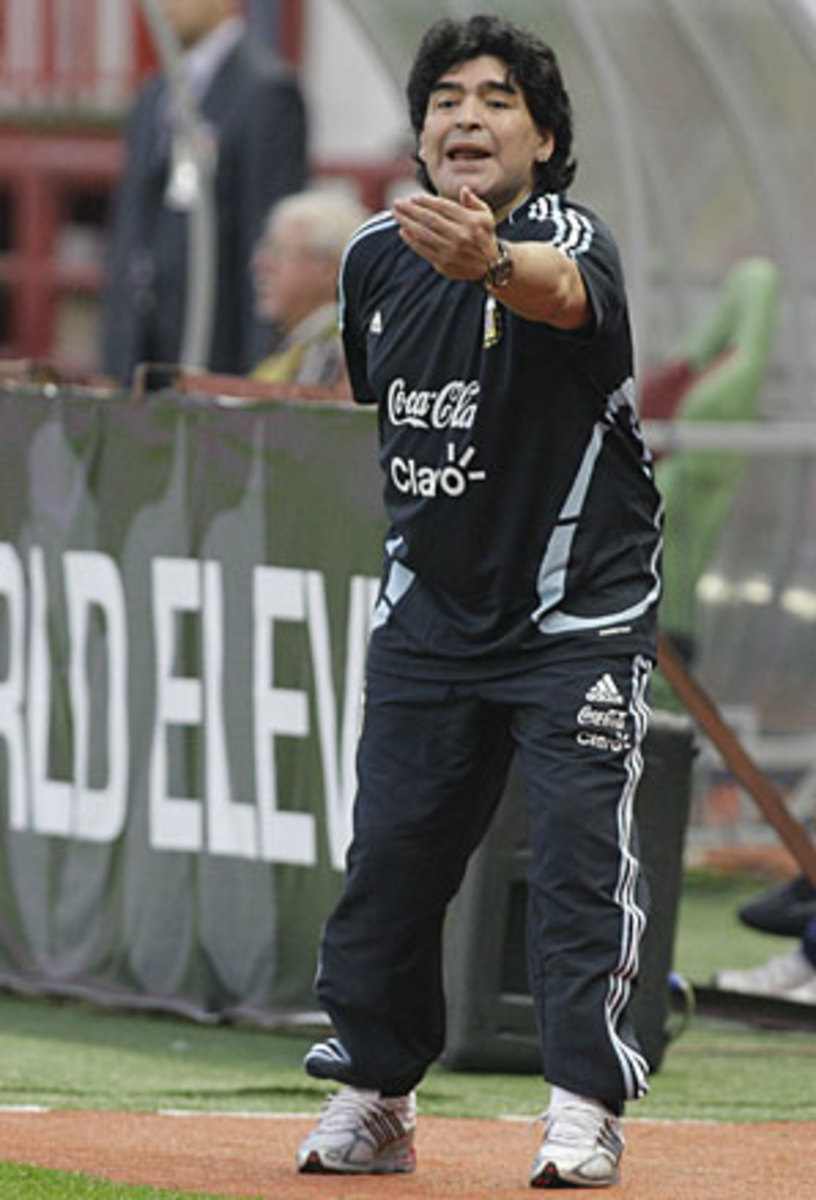South America's elite move into World Cup qualifying homestretch


With South American qualifying for the 2010 World Cup resuming next month, the top four positioned teams of the continent tested their strength in what ended up being worthwhile friendly matches on Wednesday. While Brazil, Argentina and Chile claimed hard-fought victories in Europe, Paraguay lost in Asia.
While all four nations are expected to qualify directly for the World Cup, they will have to continue to progress in order to be in ideal form just in time for the finals, which kick off in less than 10 months. Here's a brief check-in on each of the four South American teams:
The five-time world champions may have improved to 10-1 this year, but their 1-0 victory against Estonia on Wednesday in Tallinn wasn't pretty. The Seleção couldn't find its form, and even if it was its first match since winning the Confederations Cup in June, the best team in the world was expected to do a whole lot better against the 112th-ranked team, which last year was thumped 7-0 by Bosnia-Herzegovina in a World Cup qualifier.
But is this worrisome for Brazil ahead of the clash with archrival Argentina on Sept. 5? Not at all. The majority of the Brazil squad played few competitive matches since the vacations, and this was clearly noticeable on the field. For instance, Kaká just made his Real Madrid debut in a friendly win against MLS' Toronto FC last Friday, and is nowhere near full fitness.
Brazil coach Dunga said his "only concern" was avoiding injuries against the Northern Europeans, but the match was hotly contested, with both teams playing physical soccer and with no Joga Bonito in sight. The only Brazilian to come off seriously injured was Flamengo midfielder Kléberson, who dislocated his shoulder. But such a fiery encounter might have been good preparation for the Brazilians because, with World Cup spots at stake, the highly anticipated showdown with Argentina promises to include even more aggressive play.
Chilie's impressive 2-1 victory over Denmark in Copenhagen was another example of why it can be considered a realistic threat at the World Cup next year. The Chileans are only a step away from securing World Cup qualification after a solid campaign in which they have won eight of 14 matches. Former Argentina boss Marcelo Bielsa has transformed Chilean soccer, and that progress was in clear evidence against the Danes. Chile features several exciting players, with Udinese attacking midfielder Alexis Sánchez the clear standout. "El Niño Maravilla" was brilliant against Denmark, handing his side a justified victory with a fine headed goal in the second half.
Could Chile be a World Cup contender? Indeed. Chile is one of the most entertaining teams in the world, and it seems capable of mixing it with the top teams. Any win in Europe is a good one, particularly if it is against a team that leads its World Cup qualifying group in style.
Besides Brazil and Argentina, in recent times South American teams have struggled during the World Cup, especially when facing substantially taller European teams like Denmark. The height factor is always important for South American teams to overcome, and with Chile possessing several small, technically gifted players, its showing was very positive.
After leading the South American World Cup qualifying table for several months, Paraguay has experienced a sudden change of fortune. And though its World Cup position isn't at risk yet, it will need to pick up its game or else it could once again be sent crashing out in the group stage of a World Cup.
Paraguay struggled to find its feet in a 1-0 defeat to South Korea on Wednesday in Seoul. This surely concerns coach Gerardo "Tata" Martino in advance of qualifiers against Bolivia and Argentina in September. Paraguay hasn't won any of its four qualifiers this year, and its many weaknesses were exposed against South Korea. If not for the heroics of Valladolid goalkeeper Justo Villar, Paraguay could have lost by more goals. While star striker Roque Santa Cruz of Manchester City wasn't available because of injury, the usually reliable attacking partnership of Nelson Haedo Valdez and Salvador Cabañas was nonexistent.
Paraguay has taken the same attacking approach throughout the qualifiers, whether playing at home or away. This isn't a very sound strategy in such a strong qualifying zone, and it explains the defeats to Uruguay in Montevideo and to Brazil in Recife. With only 10 months left until the start of the World Cup, Paraguay is in a race against time to rediscover its old self.
Argentina's exciting 3-2 win over Russia in Moscow was exactly what it needed. Not only was it a motivating result for the two-time world champions, but it will also take heaps of pressure off Diego Maradona and his squad ahead of the World Cup qualifier with Brazil.
After such a good performance against one of Europe's better sides, the much-criticized Maradona will be thinking that he might really be the right man for the job after all. Even if the embarrassing 6-1 loss to Bolivia in April won't be forgotten, Maradona got it right this time. He outwitted Guus Hiddink, one of the most knowledgeable tacticians in the business, and even did it without star Lionel Messi. Everything went to plan for "El Diez," as his son-in-law Sergio Agüero put an end to his scoring drought with an absolute stunner, and two players Maradona introduced in the second half -- Lisandro López and Jesús Dátolo (who made his national-team debut) -- also scored.
Now after such a motivating win, what can be expected from Argentina against Brazil? With a little more than three weeks before the big game, Argentina should be a lot more confident. Having struggled in its previous two qualifiers in June, Los Albicelestes badly needed a victory in Moscow, and the fact that they had to fight hard for it was even more beneficial.
